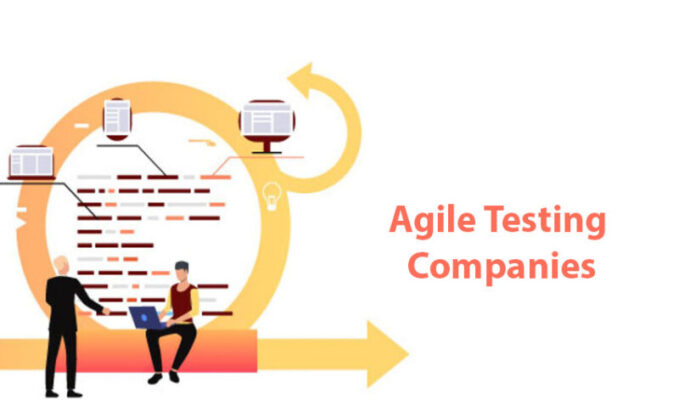Gamification by definition is the act of applying game-like characteristics to a non-game situation to increase user interaction. In the context of software testing, it’s the process of involving end-users in testing. Their job is to help testers test rather than test themselves. How? Let’s find that out.
Users are offered rewards and incentives to take part in this process that requires proper engagement to be successful. Without rewards, it’s hard to guarantee engagement. Some willing helpers are just happy to have their names added to the credits. Look for enthusiastic colleagues (who don’t necessarily have to be testers) and use their help to improve the quality of the product. For example:
- Customer support understands user issues and knows why and how users use the system.
- Account managers know what stakeholders want from the new features.
Don’t be mistaken – this isn’t just a straight-forward, hassle-free method. Testers are required to put effort into utilizing the offers of help effectively. Here are a few tips to get you started:
Mission
It’s your job to enable your helpers to focus on the specific issue for which you’re gamifying. Communicate the objectives clearly – as you do in other areas of software development – to get the most out of the activity.
Rules
Having rules confines helpers’ focus on the important areas. This ensures that the feedback is relevant and useful.
Competition
Making this process competitive can spark enthusiasm among the participants. However, this should be done carefully because there may be a tradeoff between the quality of the feedback. For example, “the first person to find five issues gets a bonus” can result in a very quick five issues for five separate typos.
Rewards
Rewards depend purely on the volunteers. In many internal sessions, employees are offered snacks such as fries, buffalo wings or even rounds of drinks in the pub after work.
Maintaining enthusiasm for both volunteers and yourself is the key here. Deterioration of returns for efforts should be avoided when missions are repeated by mixing up the volunteers. Gamification techniques can help ensure powerful results provided that the volunteers are engaged and the focus is confined to key areas. These results can provide useful insights about your users that can be beneficial in software development processes.
Gamification and Developer Motivation
Software development can be very hectic. That’s why managers prefer a team that is highly motivated to face the challenges and dedicated to applying best practices while staying committed to the projects. These are essential factors that can lead the teams to success.
However, keeping the team motivated is a challenge in itself and it’s hard to do so when the quality of testing or software testing tools is low, deadlines are continuously delayed, collaboration among team members is poor and they’re failing to adopt requirements. In such instances, gamification can play a vital role in lifting developers’ motivation levels to produce quality work. One of the major drivers of developer demotivation is the lack of purpose. If they don’t know why they are doing what they are doing, they will feel unsatisfied. Give them a purpose. Sometimes, developers are left demotivated because they don’t feel in control due to their working conditions (they cannot control their responsibilities, independence, promotion, recognition, or achievements). The reasons for this dissatisfaction include continuous or unclear changes to objectives, unrealistic project goals, unfair reward systems, less influence in the workplace, and poor communication between team members.
On the other hand, developers’ motivation is driven by factors such as professional recognition, autonomy, feedback, supportive relationships, challenging work, rewards and incentives, and a sense of belonging. Studies suggest that incorporating gamification techniques can lead to encouraging results and should be integrated with organizations’ software testing tools while more effort is needed to analyze the real impact of gamification.
How does Gamification help?
1. Better User Engagement
Rewarding the users in exchange for their engagement is a useful approach. If the engagement is interesting, users will continue interacting.
2. Goal Setting
Gamification can play an important role in achieving the set goals and objectives. The gamification designer needs to have a good knowledge of the S.M.A.R.T concept. Goal-setting based on this concept eases the design and helps achieve the purpose of gamification.
3. Increasing Skills
As discussed, demotivation can have many adverse effects. One of them is the obstruction in increasing skills. However, through gamification, this problem can be dealt with. For example, through interactive videos, employees can be taught how to improve table manners, call attending manners, telephone manners, etc. There can also be situational videos that train employees on how to handle unexpected situations.
4. Healthy Competition
Gamifying a challenging environment gives rise to healthy competition and creates a captivating and fun working environment. It keeps the pace of work in place and helps achieve targets empathetically with full enthusiasm from every individual. The individual efforts put in for the entire tasks are also amplified to a great extent.
5. Rewards and Recognition
Recognition or reward is a dominant motivator and booster in any field. Yet, many organizations fail to show appreciation to their employees properly. When designing an employee appreciation, it’s important to keep in mind that the employees should be rewarded on their efforts and activities rather than achievements. Gamification can provide creative and innovative ways to improve individual and team morale, effort contribution and interest for the longer-term. That will, as a result, improve the overall productivity of the organization.
Ways to gamify rewards and recognition
Spin-a-wheel prize: Employees who achieve their monthly target get to spin a wheel and get rewarded for their efforts.
Publish success stories: Success stories of employees who performed well.
Reward points: Reward points and badges can be given by managers/peers as a way of recognition.
Conclusion
The importance of gamification is undeniable. It’s one of the main drivers of employee enthusiasm and motivation. This technique is also useful in QA as incentives can attract people to participate in engaging sessions.
Read Dive is a leading technology blog focusing on different domains like Blockchain, AI, Chatbot, Fintech, Health Tech, Software Development and Testing. For guest blogging, please feel free to contact at readdive@gmail.com.





